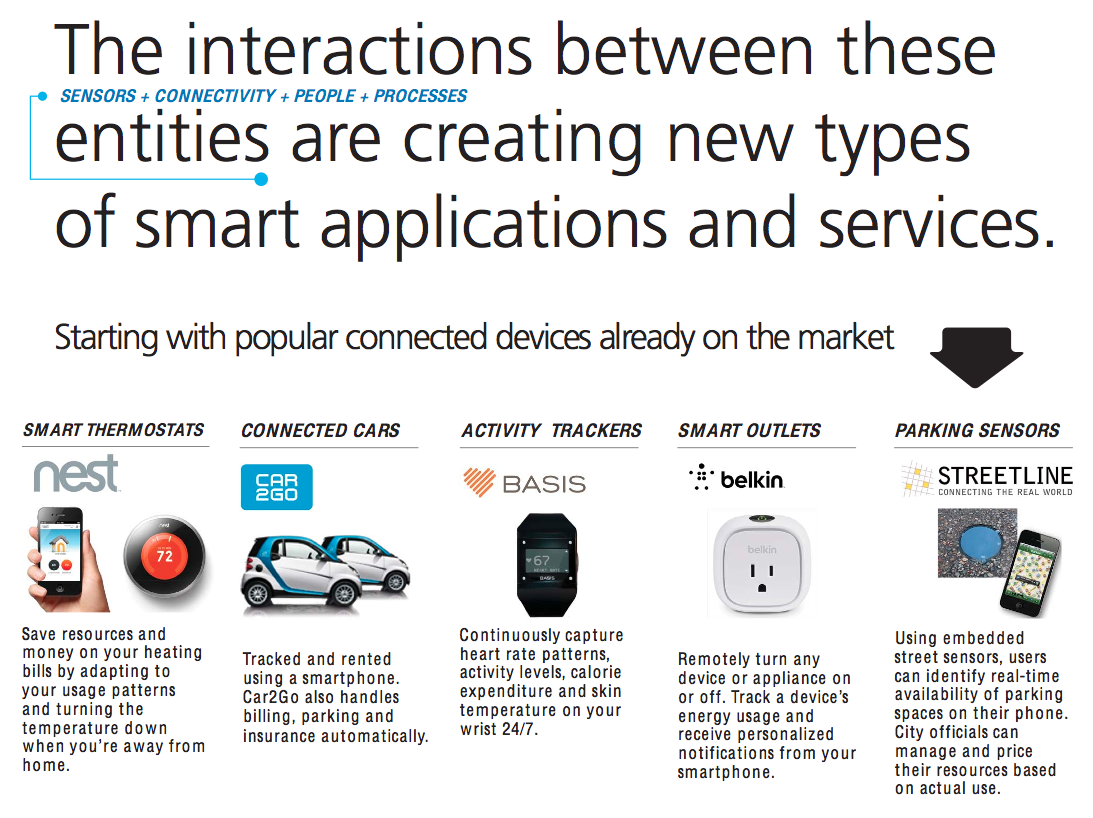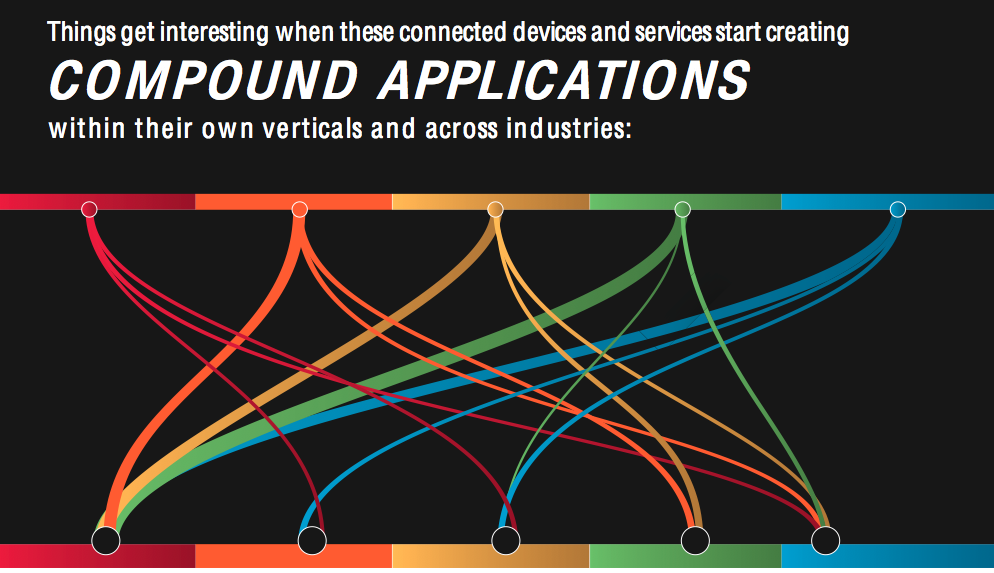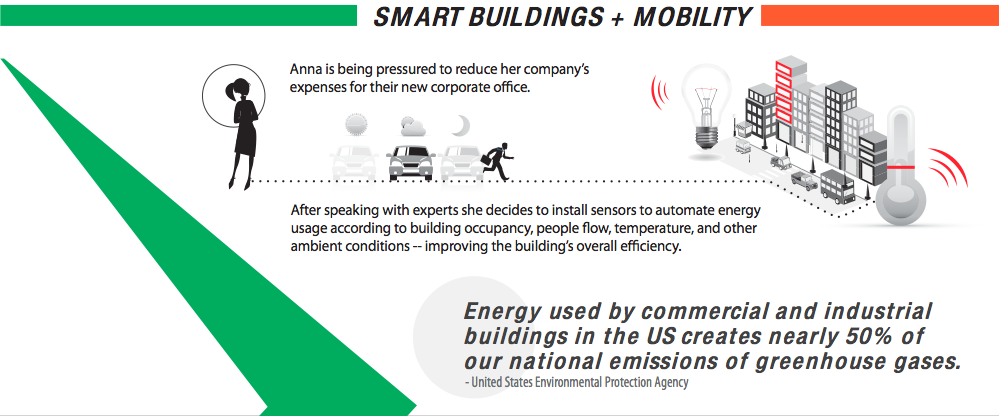In the last few months, there has been so much talk about IoT it must have been hard not to stumble across a news about it. But even though, everyone talks about it, its hard to get a grasp on things. What is IoT really? Is it a method like BPM or concept like Big Data? Or is it a technology that was recently invented and is now ready for use like WebRTC? Well for us it is a a trend or a vision of how things could look like on a broader scale but in order to make this vision come true lots of small things and technologies need to be integrated in a system and work together as a team and communicate openly with other systems.
But the IoT that is described in so many talks and posts these days is not the one we need in order to profit from it. There doesn’t need to be a fully automated city that guides its inhabitants autonomous vehicles to the right parking spot in order to save a few minutes of searching, before we can join the trend and profit from all of this as well. Any medium sized company can sit down and think about the opportunities that arise from recent tech development and think about how they can use this to make their own business a bit smarter or more controllable or how to create new services that haven’t been seen before. Many such examples already exist:

Once many do this, lots of small systems will arise that can start talking to each other and provide services that can be consumed by each other, closing the gaps between them and lead to the ultimate goal.

Our motivation
So why do we at OPITZ CONSULTING are so eager about IoT? Well first its necessary to know as much as you can about a technology trend everybody is talking about. But while doing our research we also found that most of the pieces necessary to build this puzzle that is IoT, we already have in our skill-set. BigData, BPM or Adaptive Case Management (ACM), BI, Enterprise Applications, as well as Project Management skills they are all key parts to a successful IoT story. What we lack as a software company is a deep knowledge of building little sensors and pieces that connect to the net and allow us to sense the environment or act within it. But thankfully these are only the enabling technology and we dont need to know how to build these in order to take part of this development. Lots of Hardware producing companies out there, we focus on the software, the part where the magic happens.
Lets build a prototype!
Still we wanted to know more about the underlying parts so we decided to develop a prototype, integrating some key parts such as BPM, Event Processing, Java, some native code running on the low level parts of devices, a different communication stack than TCP/IP which is so well known by now and so on. Also we wanted to build a prototype that can show the actual potential of IoT and not just a technology demo of a small children’s toy robot being controlled by a smartphone app. The ultimate goal after all is generating some form of value for our customers.
There is a great infographic about IoT (also the source of the pictures above) that also shows the expected business impact for several categories such as transport or buildings & infrastructure. This infigraphic has been created by Harbor Research, a consulting firm that has been around since 1984 and has always been focusing on what is now hyped as the Internet of Things. So both the idea and the concepts aren’t new, but rather the market just recently realized the potential.
a prototype in this area would be both interesting on a personal level as well as relevant from a business perspective. Curiously our prototype addresses one of their example compound applications what they call „Smart Buildings + Mobility“.
Our protoype is a event & rule based home/office lights automation system that reacts to the presence & absence of users and controls lights and other simple devices accordingly. While this started as a hobby project to control radio controlled power plugs from a smartphone, it is now a pretty good example of what is possible with IoT technologies. We work with different technologies, 3G, Wifi, 433mhz radio and maybe soon zigbee. Through this we learned all sorts of things about the heterogenous environment that our devices are deployed in.
To give you an idea of what our system does lets consider two examples:
- A family using our system has all their lights set up using this concept. Now if any one of them returns home from work/school/college, their smartphone logs into the local wifi. This is registered by our network scanning utility and the device is mapped to a user. An event is triggered, saying that User „Shelly“ has just returned from school and is now home. A user state change process is triggered in our system and the business rules are looked at to see if any apply. Since Shelly is the first user, but its already beginning to get dark outside, all lights in the entry way are lit up as well as the kitchen and the living room. Now Shelly could also set up a rule that makes sure her private room’s lights are turned on as well.
- A worker in a insurance company leaves his workplace. He shares his office with two other coworkers. Both left work early, so he’s the last one to leave the office. Once his smartphone logs off from the companies Wifi, the user goes „missing“. After 5 minutes he’s considered offline and an event is fired again. The rules state that any office that is uninhabited should not be lit up so all lights turn off in this office. Since no one else on the floor is still at work as well, the entire 15th floor’s lights are shut down as well.
Our prototype was supposed to be able to control such situations. To see how we did it, see these other posts going into greater detail about some parts of the prototype:
- Introduction (part 1)
- an architectural overview (part 2)
- IoT prototype – low level thoughts on Oracle CEP Embedded (part 3)
- low-level thoughts about the 433mhz communication (part 4)
- Retrospective. What did we learn. What did we miss. What should also be considered (part 5)
Sources:
Images from Harbor Research Infographic





2 Kommentare
Pingback: IoT prototype – low-level thoughts about camunda BPM and Drools Expert (part 6) | The Cattle Crew
Pingback: Introducing the Oracle IoT Cloud – Part I: Overview | The Cattle Crew Blog